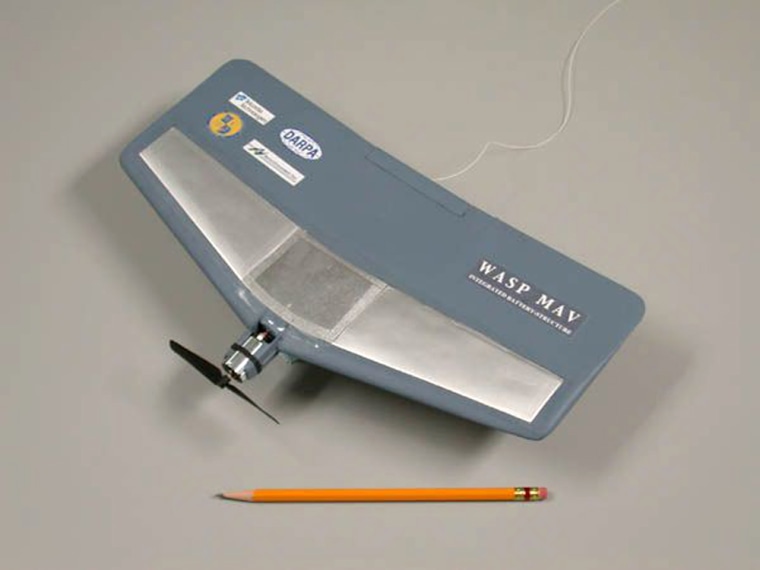If the Wasp buzzed your backyard barbecue and sent out a live video feed, you probably wouldn't notice.
The new robotic plane is designed for troops who need a peek at the enemy before going in.
The diminutive drone, about the size of a magazine, was tested recently during Navy exercises off Southern California, according to Monday's edition of the C4ISR Journal, part of the Army Times publishing group. The journal covers military intelligence, surveillance and reconnaissance.
Though made with off-the-shelf products, the Wasp is nothing like remote-control planes sold at hobby shops. Its wings, which span 13 inches (33 centimeters), carry 4.25 ounces (120 grams) of lithium-ion batteries. The whole rest of the plane — including video cameras front and back — adds just 1.75 ounces (50 grams) to the total takeoff weight.
It is launched by hand.
In 2002, a rudimentary Wasp set an endurance record for micro air vehicles of 1 hour and 47 minutes. It has since been outfitted with an autopilot feature that uses the Global Positioning System.
The drone was built by AeroVironment in Simi Valley, Calif. with funding from the U.S. Defense Advanced Research Projects Agency.
One application might be to check out enemy ships when no helicopters are available for the task.
"It has the potential to save lives during boardings," said Lt. Cmdr. Joseph Roth, communications officer of the Nimitz Carrier Strike Group, which ran the drone through its paces last month.
According to the C4ISR Journal article, however, it's not yet clear how or whether the Wasp will be deployed.
The much larger ScanEagle drone, with a wingspan of 10 feet (3 meters), has been at work on military surveillance in Iraq. Defense contractors and government officials see these relatively inexpensive drones getting more use as the U.S. military continues to modernize.
